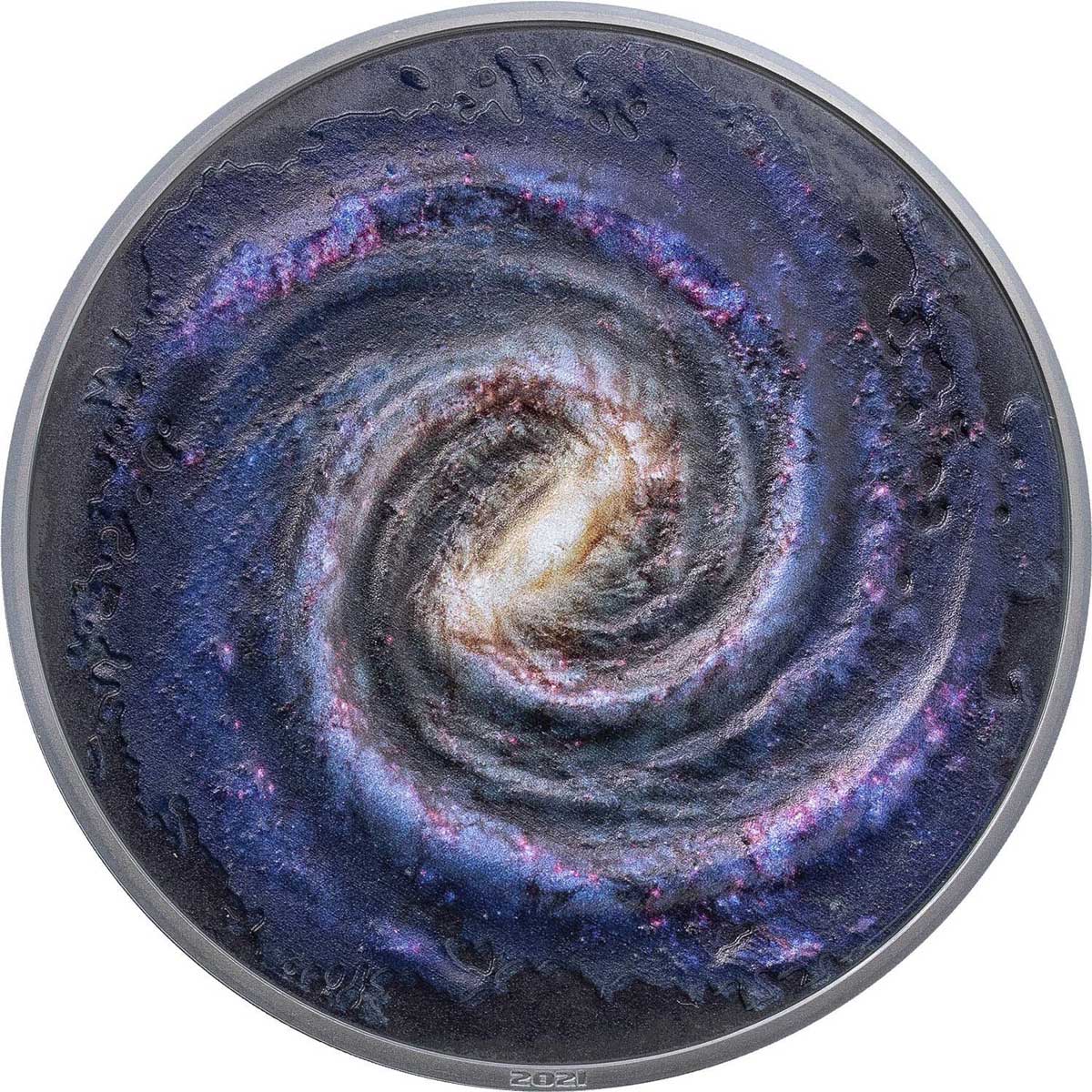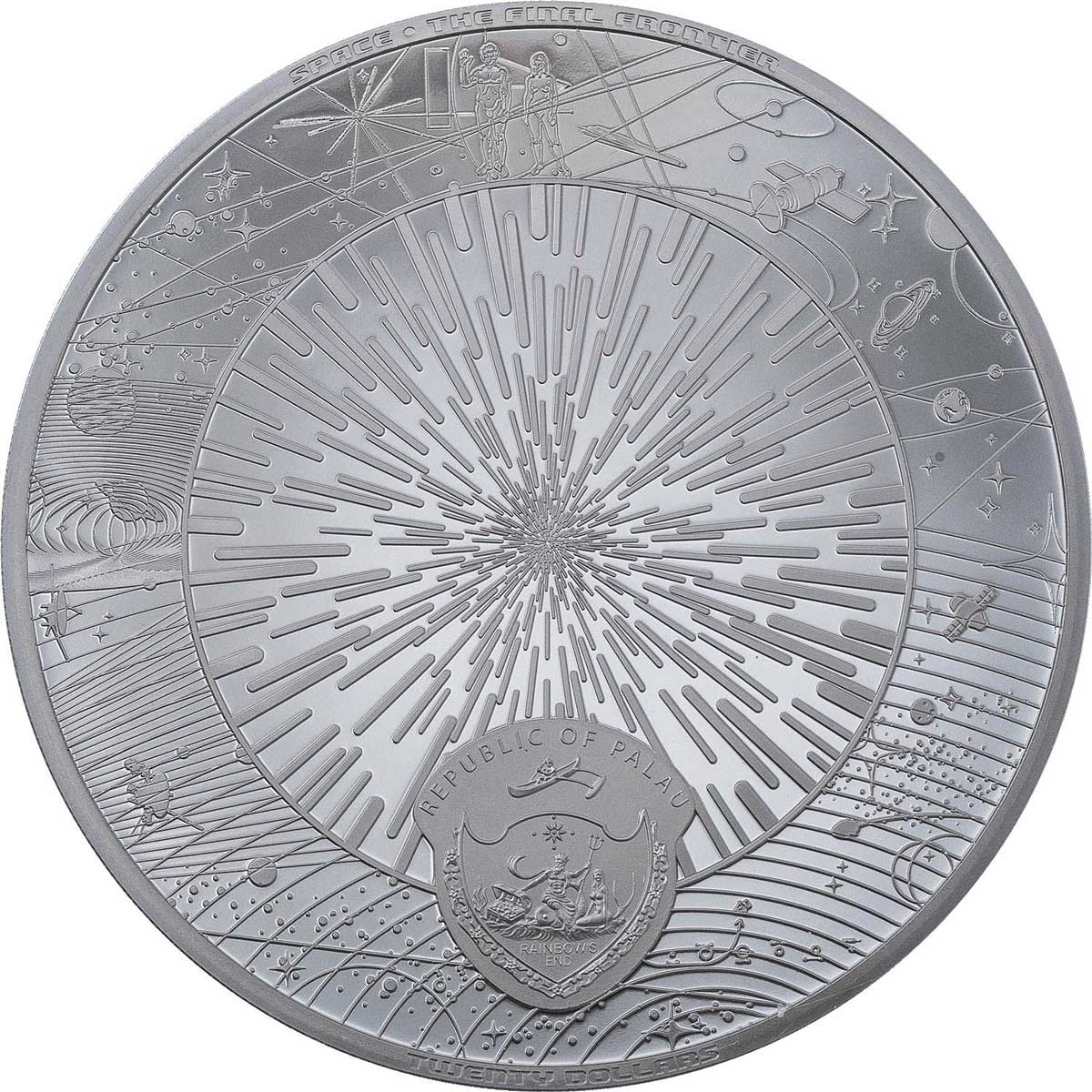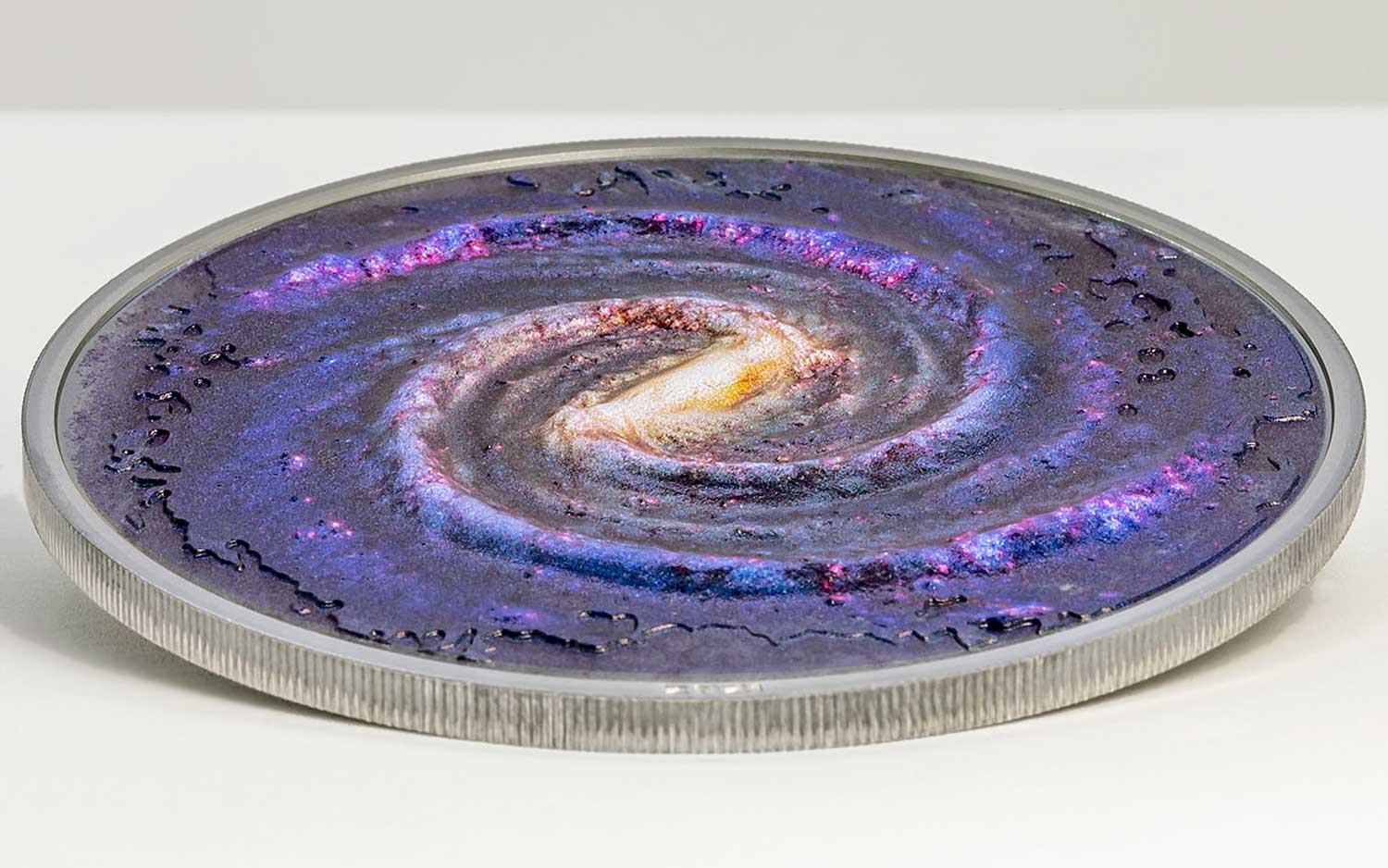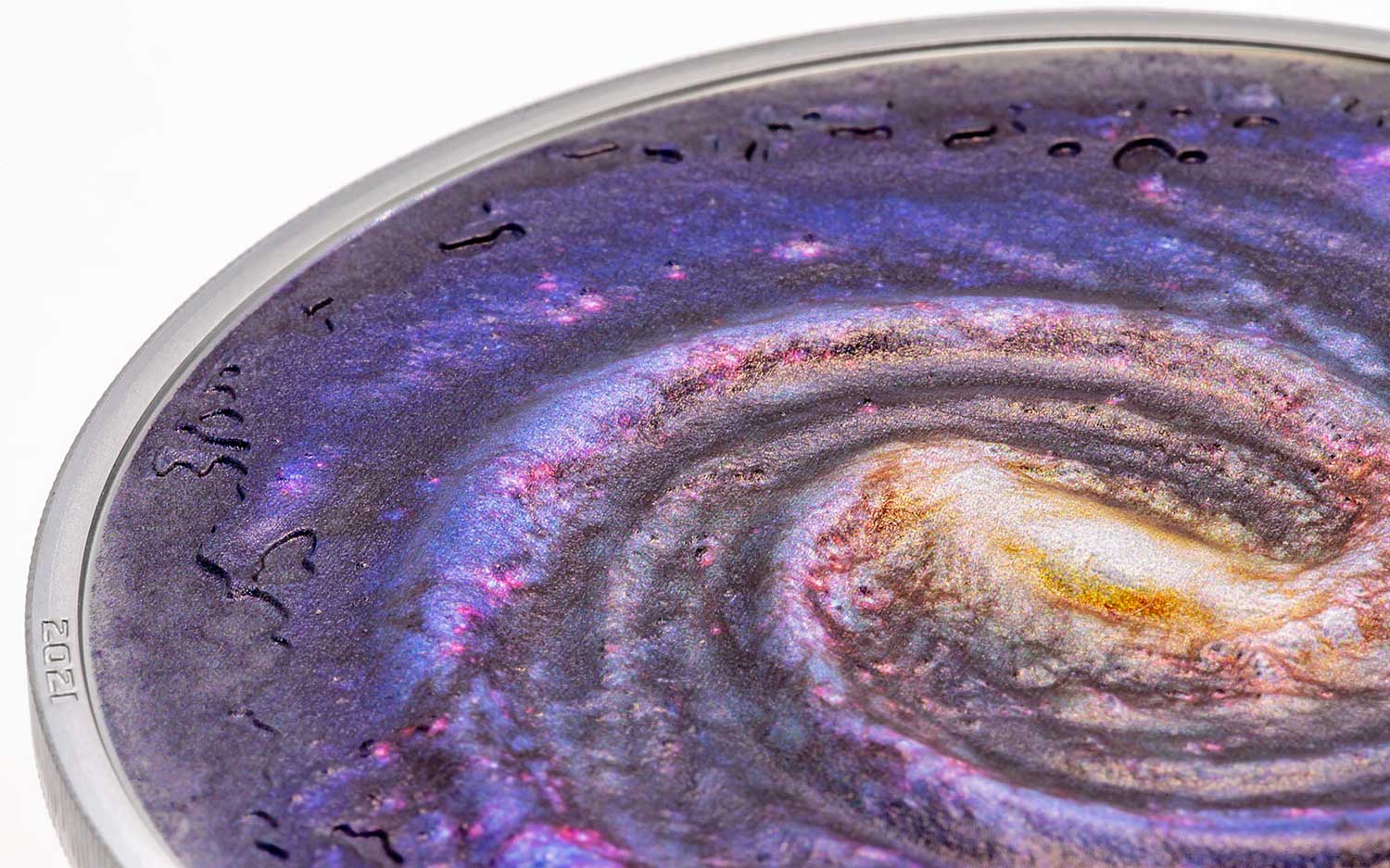Numiscollect continues its numismatic journey through the Final Frontier with the Milky Way
It was in November 2019 that Numiscollect debuted the first in its ‘Space: The Final Frontier’ series of astronomy coins. Starting out as big as they could, they went with ‘The Universe’ for the debut. This time around, we’ve dropped down to something a ‘mere’ 200,000 light years in diameter – the Milky Way.
These were always going to be difficult subjects to portray on a coin, even a three-ounce, 65 mm diameter one, but the Milky Way has a look that lends itself well to the canvas, and this is, in our view, a superior design to the first one. The spiral galaxy is very well rendered, utilising some subtle and well placed high relief to give it some body. The colour application is of the highest order, with none of that pixellated rubbish we still see too often on some other coins.
We’re particularly pleased that Numiscollect have kept this face free of inscriptions. They aren’t necessary and the unimpeded design thrives as a result. The obverse is a common one to the series, but is nicely covered with astronomical imagery, as well as the shield emblem of Palau. It’s all capped off with a slick black proof finish.
With a mintage capped at 333 pieces, it’ll be a relatively rare beast. It comes boxed with a Certificate of Authenticity, of course. It should be available to pre-order now, with shipping around the middle of the year.
THE MILKY WAY GALAXY
There’s no place like home! Our solar system sits within the Milky Way, a barred spiral galaxy approximately 150-200,000 light years in diameter, with more recent simulations suggesting that the inclusion of a dark matter disc could expand that to 2,000,00 light years. It’s part of the Local Group of galaxies, which form part of the Virgo Supercluster,
which is itself a component of the Laniakea Supercluster. Staggeringly, the Laniakea Supercluster holds over 100,000 galaxies and is over 520 million light years across.
Despite the Milky Way barely registering in that huge mass, it’s a giant in its own right, containing an estimated 100-400 billion stars and an equal number of planets! Our sun sits around 27,000 light years from the Galactic Centre, believed to be a supermassive black hole called Sagittarius A, with a mass some 4,100 million times that of our Sun.
The oldest stars in the Milky Way formed just after the Dark Ages of the Big Bang, so are almost as old as the Universe itself. It is moving at a speed of around 600 km per second, heading who knows where. The sheer scale of the objects involved is almost beyond comprehension, and we’re a long way from understanding even a fraction of what is encompassed within it. Indeed, recent studies suggest that we can only observe 10% of the mass of the galaxy, with the other 90% possibly being the mystical ‘Dark Matter’.
| SPECIFICATION | |
| DENOMINATION | $20 Palau |
| COMPOSITION | 0.999 silver |
| WEIGHT | 93.3 grams |
| DIMENSIONS | 65.0 mm |
| FINISH | Black proof |
| MODIFICATIONS | High-relief, colour |
| MINTAGE | 333 |
| BOX / C.O.A. | Yes / Yes |







Leave A Comment